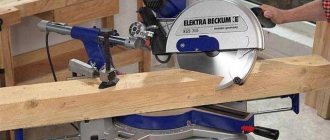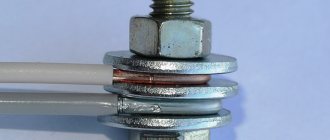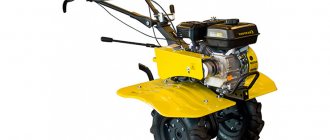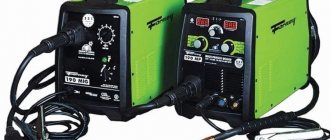An electric jigsaw is one of those tools that craftsmen buy first. In this sense, only a drill can compete with it. Why?
There are probably good reasons for this:
- A jigsaw is a very versatile tool. Sawing a variety of materials in any direction.
- The tool is simple, compact and inexpensive. Even a novice master with a modest budget can afford it.
- If you've worked primarily with hand tools, purchasing a jigsaw will dramatically improve your productivity and make your work much more enjoyable.
Choosing a jigsaw
We talked in detail about how to choose a jigsaw, how they differ and what to pay attention to in a separate article. Let us briefly repeat the main points.
The power of a jigsaw affects its performance. The more power, the thicker the workpieces it can handle, and the faster the work.
Adjusting the speed of the electric motor and pumping up the blade is absolutely necessary if you work not only with soft wood, but also with other materials.
For one-time, simple work, any jigsaw model will do. But in general, the statement “more expensive is better” is true for jigsaws.
Plastic cutting
A fairly fragile and at the same time elastic (depending on the purpose) material, which also has a fairly low melting point. To understand once and for all how to properly cut plastic with a jigsaw, you should know only 2 simple rules.
- It is better to keep the cutting speed below average. Of course, plastic does not have the hardness of metal to deform the teeth of a saw blade, but a high stroke rate can simply melt it.
- There are special files for working with this material, but if they are not available, you can use standard ones for wood or metal. Suitable files for cutting are T101A (where A is a small tooth), T101B (B is a larger tooth) and T101X (X is universal for wood, plastic and metal).
Principles of correct operation
After a jigsaw is purchased, the master must learn how to use it. A jigsaw is a simple tool. But even a hammer - which is easier - can be used in different ways.
There is a rule that knows no exceptions: there are no bad tools, only misused tools.
When using a jigsaw, the master has “three degrees of freedom.” The master must:
- Choose the right equipment (file).
- Set the optimal pumping amplitude and motor rotation speed.
- Use the most appropriate working methods.
We can talk about each point for a long time, but we will try to highlight the main points.
Selection of equipment
A great variety of files are produced and sold. They differ in the type of steel from which they are made, the length and width of the blade, the shape and size of the tooth:
- The harder the material that needs to be sawed, the smaller the tooth on the selected file should be.
- For a curved cut, you need to choose a narrow file. For straight cuts - as wide as possible.
- The length is selected based on the thickness of the workpiece that needs to be cut.
There are especially many different saws produced for working with wood. For quick cross cuts, choose a saw with large, set teeth. A large pitch allows you to cut very quickly, but it causes a lot of chips. For a clean cut, the tooth must be smaller.
Metal cutting files are very similar to a regular hacksaw blade for metal.
The files must be sharp. For important and large work, stock them in sufficient quantities.
Paging and speed
Pumping can significantly increase cutting speed. It is usually turned on when you need to quickly saw a large piece of wood straight. In other cases, it doesn’t really help and can even make work difficult or worsen the quality of the cut.
Figure cutting is done with paging completely disabled. It is impossible to give general recommendations here. You need to try different modes. The best solution is to first practice on some scraps of material.
Inexperienced craftsmen tend to work with a jigsaw immediately at maximum speed. It is not right.
When cutting plastics, the file can become very hot at high speed and the plastic will begin to melt. Not all metals like high speeds.
Start at low speed and increase it, carefully monitoring the result. If the quality of the cut deteriorates - the number of chips increases, the file overheats, etc. - reduce the speed of the file.
Working methods
As has been said many times, an electric jigsaw is a tool for many uses. However, the variety of situations comes down to just three cases: straight sawing, curved cutting and cutting holes.
Straight cut
This is the simplest case. Draw a line with a pencil and smoothly move the jigsaw along it. The built-in laser pointer will be more than useful here. Sometimes, for such work, a parallel stop, which is attached to the jigsaw frame, can be useful.
The saw blade speed can be set to maximum. Pumping will further increase cutting speed.
To maintain a straight line, you have to constantly “steer” the jigsaw. But even the most thorough “guidance” gives a mediocre result. In this type of work, a jigsaw is inferior to a circular saw in both cut quality and speed.
If straightness and evenness of the cut are critical to you, use a circular saw instead of a jigsaw.
Curvilinear cut
Such cuts are the native element of electric jigsaws. They were “born” for this.
The main secret of success is not to rush. Carefully mark the part. It is convenient to stick masking tape on the surface of the workpiece and draw lines with a pencil. Guide the jigsaw along the marking line, turning it slightly ahead. Small radius bends must be made especially slowly so that the forward movement for each saw stroke is minimal.
Cutting holes
This is one of those operations in which the jigsaw has no competitors. Typical examples: cutting a hole in a countertop to install a hob or sink, making a hole in a cabinet wall for an outlet, and thousands of other similar cases.
To cut a hole in a part, you first need to drill one or more “starter” holes using a drill. A jigsaw file is placed in them and the cut begins and ends in this hole.
If you have to cut a very large window, it is more convenient to cut it in parts.
Sawing at an angle to the surface of the part
All the cuts described above can be made not only perpendicular to the surface, but also at an arbitrary angle up to 45 degrees to the plane of the part. The need for such cuts arises, for example, if you need to connect two parts “on the mustache”.
How to cut a radius correctly
It seems like there is nothing complicated here. And the jigsaw itself is designed for curved cuts.
But if you try to cut a radius at one time, the file may “bite”, resulting in visible defects remaining on the workpiece.
To avoid this, you can do differently.
First, we make simple markings on the workpiece, as shown in the photo. Then, according to this marking, you need to make straight cuts.
And only after this procedure can you safely begin cutting out the radius on the workpiece. There will be no defects.
Some useful tips
- The working stroke of the jigsaw file is from bottom to top. On wooden workpieces, this causes chips to appear on the surface facing the jigsaw. To avoid them, turn the part face down.
- Sawing parts from the “wrong side” is not always convenient. In this case, there will be fewer chips if you cover the cut line with masking tape.
- Another way to avoid chipping is to use files with a special “reverse tooth”. However, with them the recoil becomes very noticeable and additional physical effort is required to hold the jigsaw.
- The jigsaw file is a very elastic element. Because of this, it bends during cutting, which, in turn, leads to the cutting plane moving to the side. The thicker the workpiece being cut, the greater the slip. To reduce it, use the sharpest saw blades and feed the jigsaw forward as slowly as possible.
- Thin metal, thin plywood, hardboard can rattle a lot during operation. Such parts need to be placed on a sheet of 10-12 mm plywood and this “sandwich” must be cut.
Standard causes of failure
It is of great importance how a jigsaw is used at home or in production, because careful handling of the tool is the key to its long and productive work. The most common reasons for tool failure:
- High load. This happens when a worker overdoes it and puts too much pressure when feeding horizontally. Result: the not very strong holder is damaged, the rod is out of order, the file is immobilized.
- Power tools are not properly maintained. As a result, the bearing wears out, the cam block wears out, and the gear becomes unusable.
- Electrical components have failed. This refers to the start button, usually associated with the engine speed control.
- Quite a long process time. In this case, the current-collecting motor surfaces deteriorate and the brush wears out. The corresponding parts cannot be repaired after this; they must be replaced.
Don't forget about safety precautions
This is important, so it would be a good idea to reiterate the basic precautions.
- Observe all normal requirements for working with electrical appliances.
- Don’t be lazy to keep your workspace tidy: don’t keep unnecessary items at hand, remove accumulated sawdust and scraps more often, make sure there is good lighting.
- If you don't like pulling splinters out of your fingers and removing sawdust from your eyes, use personal protective equipment: gloves, glasses or a protective mask.
Pay close attention to workplace organization. And the work will go faster, and your fingers will be intact.
Video description
This video clearly shows the process of cutting with a jigsaw:
- After finishing work, you should slightly loosen one of the clamps: this way the frame will not lose its elasticity over time.
Important! Patterned, combined or openwork cutting with a jigsaw is carried out only when moving from top to bottom, so the reverse movement from bottom to top should be performed without any pressure at all.
After work, you need to go over all the cuts with sandpaper, after which you can coat the finished product with varnish.
Jigsaw care
Like any mechanism, a jigsaw requires care and maintenance. Especially if you use it frequently and intensively.
Practice shows that to increase the service life of a jigsaw, you need to regularly lubricate the gearbox and rod. In addition, lubricated tools are quieter and smoother.
The jigsaw motor shaft rotates on ball bearings. They are durable and can work without additional lubrication for the entire service life of the tool. But a jigsaw is not only an electric motor.
The rotation of the shaft is converted by a special mechanism into a reciprocating movement of the jigsaw rod. The pumping device adds longitudinal vibrations of the rod back and forth to these up and down movements. All this complex mechanics is assembled on plain bearings. The loads from the working nozzle are transferred to them. It’s a no brainer that lubrication is a vital component here.
For jigsaws, consistent types of lubricant are used. They must be sufficiently refractory. During operation, the mechanism heats up from friction in the nodes and from nearby electrical windings of the motor. In this case, ordinary lubricants are liquefied and squeezed out of the friction pairs.
We have selected a video for you that shows disassembling a jigsaw for subsequent lubrication:
Tool preparation
The canvas is fixed in the device strictly along a vertical line and is well stretched. The blade teeth should point down.
To cut out a small part, select small blades, and for larger elements, choose a blade with large teeth. This way the cut will be neat and thin.
Work always begins with drawing up a drawing for a craft using a jigsaw. When working with a hand tool, the cut is made not along the drawing line, but along the inside of the contour. Fakes made with a hand jigsaw are more accurate.











